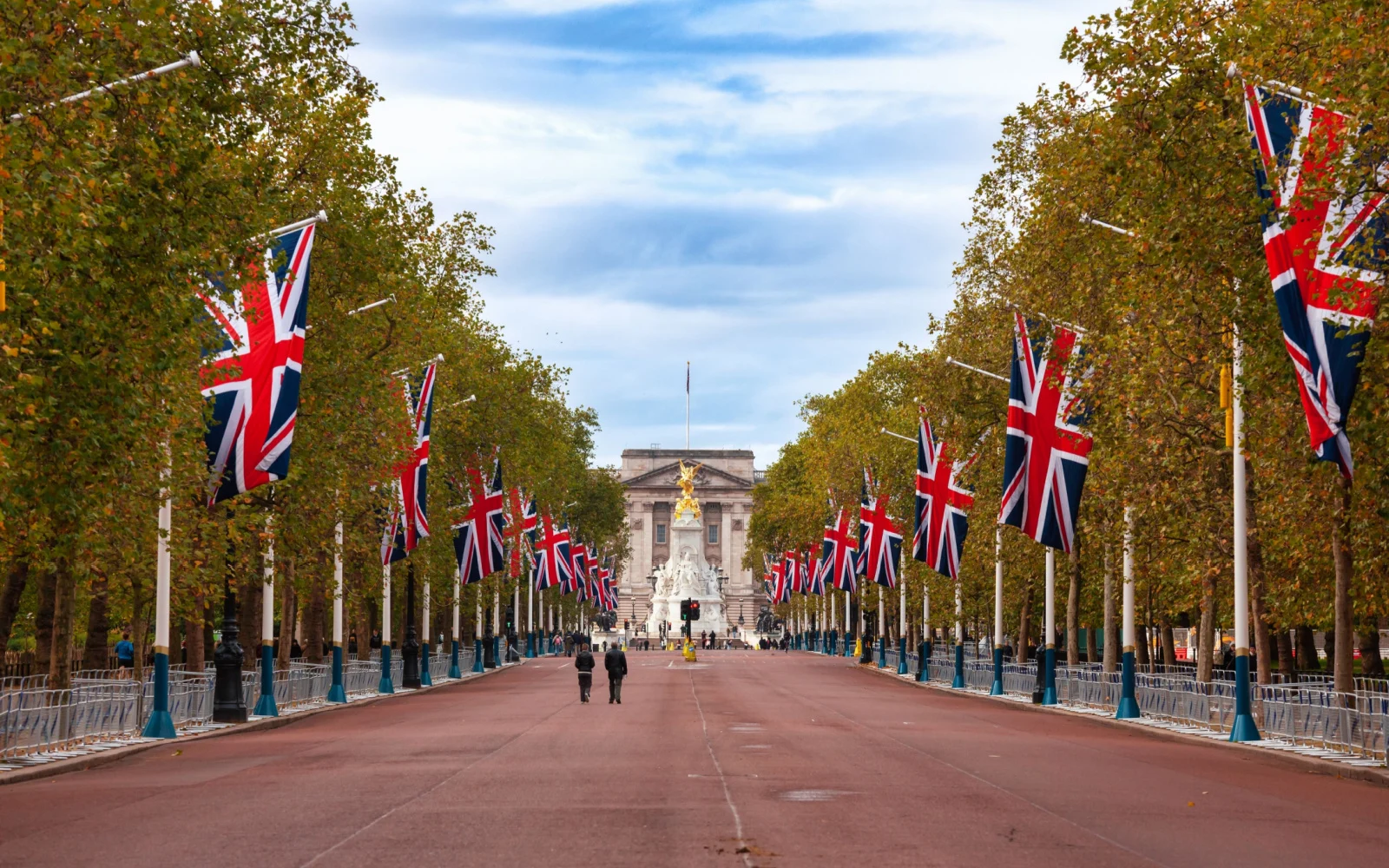What's the best time to visit London?
The best time to visit London is from May to August, offering a vibrant array of events and festivals and temperatures ranging from 50°F to 73°F. During this period, the city buzzes with activities like the Chelsea Flower Show and the Notting Hill Carnival, although hotel rates can be higher, especially in the peak months of June and July.
If you want to experience The Big Smoke in its prime, you’ll need to know the best time to visit London for different travel styles and goals. London’s energy, diversity, global culinary scene, history, and architectural highlights make this English city well worth visiting.
But you don’t want to plan a trip during the rainiest, busiest, or most expensive months of the year here. Are you looking for idyllic, dry London weather? Rock bottom pricing on hotels and flights? Sparse crowds for easy sightseeing?
Maybe you just want to learn the months that are typically the worst for a visit. We’ve got you covered with the overall best, cheapest, least busy, and worst times to see London so you can plan the right travel dates for your upcoming visit.
The Overall Best Time to Visit London
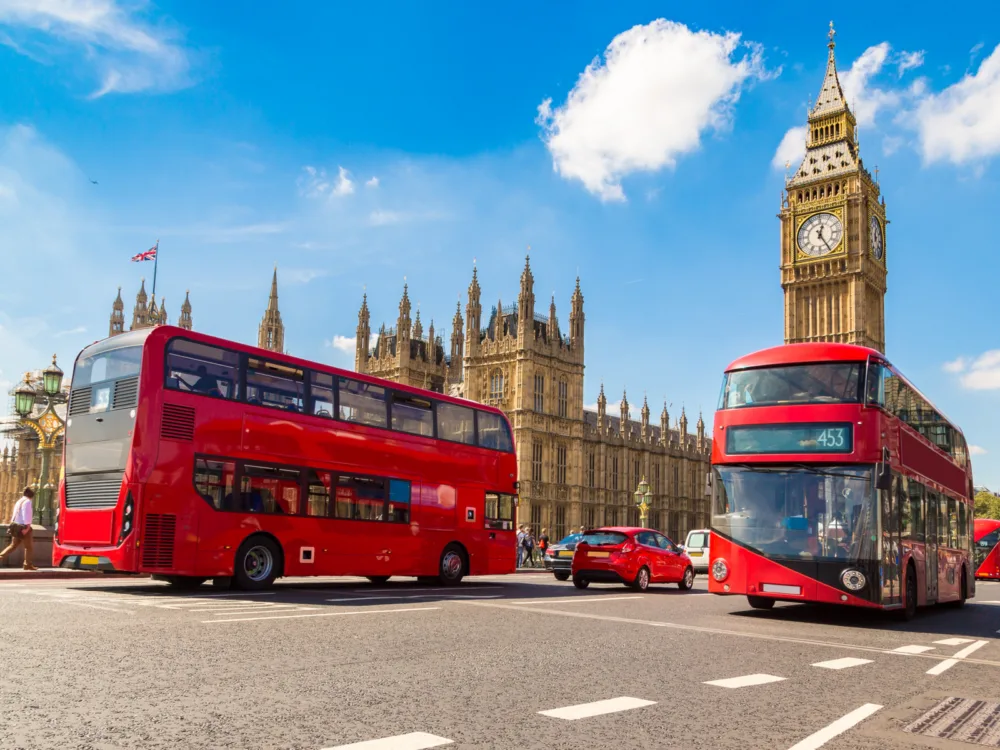
S-F/Shutterstock
The overall best time to visit London is from May to August, when you’ll have warm, dry weather, lots of events and festivals, longer days, and chances to score affordable hotel rooms.
London’s reputation for dreary, wet, cold weather may be deserved during the winter and early spring, but in late spring and summer, this city hums and buzzes with life, color, and activity.
Flowers are in bloom, the parks and green spaces are vibrant, people are milling about the streets and markets with smiles on their faces, and lots of activities and festivals are taking place in the city’s warm, dry weather.
You’ll experience London weather at its finest between May and August, seeing daily temperatures that average from 50°F to 64°F in May and warm to 59°F to 73°F by August and longer days with 14.5 to 16.6 hours of sunshine each day.
The weather is mostly sunny with minimal rain during this period. Each month sees 7-8 rainy days on average.
Compare that to the period from October to January with 10-12 rainy days/month and it’s clear why visitors love coming between May and August!
Prices can be a limiting factor when you come in the late spring or summer, but you’ll find pockets of cheaper prices during this period and better deals on 2- and 3-star hotels this time of year.
June and July mark the most expensive months of the year to stay in London’s nicest hotels (you’ll pay an average $562-$598/night for 5-star hotels), but it’s very affordable if you’ll be staying in 2-4 star hotels instead.
- May: $87-$460/night
- June: $49-$562/night
- July: $54-$598/night
- August: $91-$487/night
Events and festivals are one of the best reasons to come to London between May and August. There’s so much going on! Here’s a look at some of the larger events you can attend or check out while you’re here:
- Chelsea Flower Show (May) is known to draw the royal family out for a visit during its 5-day run, held by the Royal Horticultural Society at the Royal Hospital Chelsea.
- Trooping the Colour (Jun.) or Sovereign’s Birthday Parade is a famous, televised ceremony on Horse Guards Parade in Westminster where foot guards carry, or “troop,” the flag through ranks of guards and the King.
- Carnival de Cuba (Jun.) at Southwark Park is a huge, free Cuban festival that features salsa dancing, food, drinks, games, and activities for kids.
- Pride London (Jun.) sees big, rainbow-themed parades around the city with performers, dancing, live music, scheduled speakers, and booths showing LGBT+ support.
- The Proms (Jul.) at Royal Albert Hall is your chance to attend daily classical music concerts performed by orchestras and runs from July to September.
- Carnaval Del Pueblo (Aug.) is a Latin American celebration festival takes place the 1st week of August in Burgess Park with regional food, drinks, dancing, music, and booths offering Latin-made products and goods.
- Notting Hill Carnival (Aug.) is a Caribbean carnival parade event that happens during the Bank holiday weekend in August and has been a London fixture since the 1960s.
You’ll miss the worst of the summer crowds if you come during May or June, but if you want the warmest weather, consider coming in July or August.
Cheapest Time to Visit London
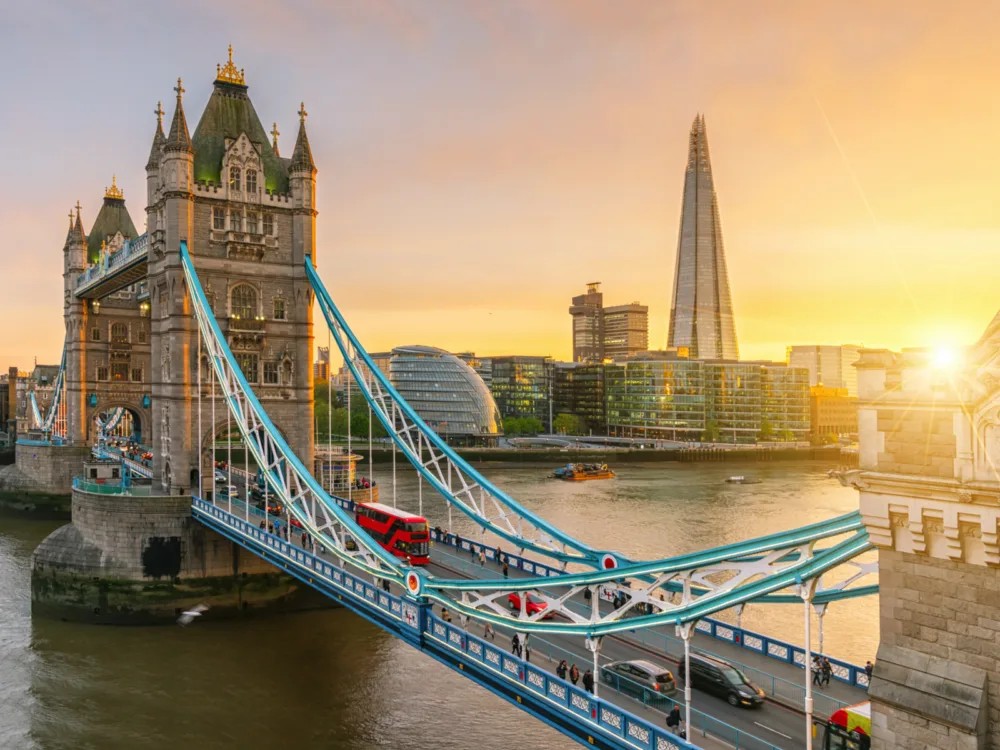
r.classen/Shutterstock
The cheapest time to visit London is January through March, when the weather leans cold, days are short, and prices on hotels and flights drop slightly.
While London has something great to offer in just about every season, January through March — the tail end of winter and the start of spring — is cheaper for a visit for a reason.
Locals describe this part of the year as dreary, cold, and wet. The daylight hours are short, with each day seeing just 8.4 to 10 hours of sunshine. That can limit your sightseeing and make your time in London feel shorter.
Expect daily highs that range from 48°F in January to a slightly-warmer 53°F in March. The most important thing to consider about this time period isn’t the chilly temperatures — it’s the rain.
London sees lots of rain in January, which is the wettest month of the year by far. You’ll likely see around 12 rainy days throughout the month, with February and March each seeing around 9 rainy days.
But it’s not all bad news!
Between January and March, London’s hotel prices sink to their annual lows. You can stay in some of the city’s best accommodations at prices you couldn’t even dream of during the peak summer and fall seasons.
Budget 2-star hotels aren’t at their cheapest between January and March, surprisingly. The cheapest months for 2-star hotels are June ($49/night average), July ($54/night), and September ($51/night).
But 3-5 star hotels reach their lowest nightly rates between January and March, with top-tier 5-star hotels dipping under $400/night during this cold, dreary part of the year in London. Here’s a look at average nightly rates during the cheapest time to visit London:
- January: $71-$362/night
- February: $67-$368/night
- March: $78-$377/night
When it comes to events and festivals between January and March, you’ll have a few to choose from, but the city isn’t doing that much compared to the spring, summer, fall, and holiday season.
- New Year’s Day Parade (Jan.) happens every January 1st in Westminster with bands, dancers, live music, floats, and big crowds of Londoners welcoming the new year.
- Chinese New Year Festival (Feb.) in London’s West End features a big parade with dragons, lions, and performers, lots of food, and Chinese music and dance around Trafalgar Square and city streets.
- Head of the River Race (Mar.) or HORR is a famous rowing race on the River Thames from Mortlake to Putney. People gather at Hammersmith Bridge and riverfront pubs to watch the race.
It’s a bit dreary out during this time of year and you’ll need indoor plans in case things are rainy, but there’s no better time to visit than January through March if you’re out to save some money when you visit London.
Least Busy Time to Visit London
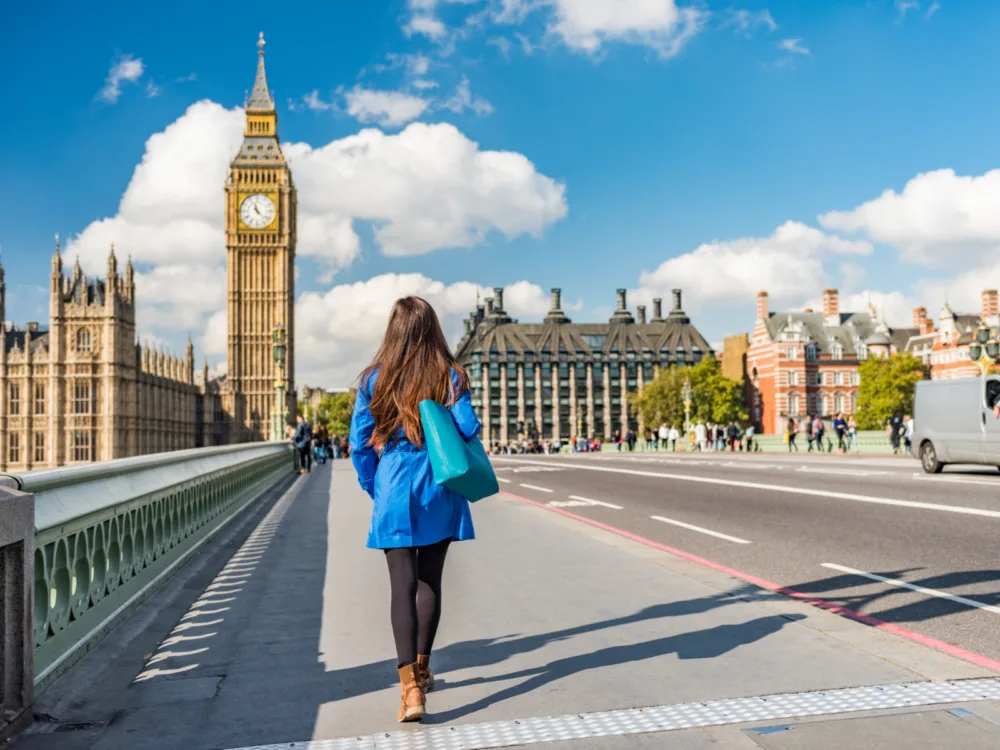
Maridav/Shutterstock
The least busy time to visit London is October through early December, when tourist crowds dwindle as days get shorter, the weather turns rainy, and temperatures drop.
Fewer people come to London in the fall and start of winter because conditions just aren’t as ideal for a visit. It’s cold, it’s wet with 10-12 rainy days each month, and there are only 7.9 to 10.6 hours of daylight this off-season time of year.
That means you’ll have less time for sightseeing and exploring the city while it’s light out, but with the benefit of smaller crowds and shorter lines at the most famous attractions and sites around London.
You can plan for daily highs between 48°F (December) to 60°F (October) and lows from 40°F to 50°F during the least busy time of year, so be sure to bundle up and pack layers you can shed if the day ends up warmer by the afternoon.
London attracts lots of early and mid-fall visitors who come to see the colorful foliage and enjoy the last of the warm, dry weather. By October, things take a bit of a nasty turn and your best bet is making lots of indoor plans at museums, galleries, and attractions.
Hotel prices don’t really reflect the less-than-ideal conditions of visiting this time of year, and it’s actually the 2nd most expensive time of year to come (after June-July):
- October: $107-$537/night
- November: $123-$546/night
- December: $67-$441/night
As far as events and festivals, the fall season and upcoming holiday season creates an uptick in things happening around the city. You can check out the following events around London:
- London Film Festival (Oct.) is a 2-week festival featuring hundreds of feature and short films at BFI Southbank.
- London Restaurant Festival (Oct.) happens all month long with restaurants participating around the city with new dishes, chef-hosted meals, and restaurant-hopping excursions around different districts.
- Frieze London (Oct.) is an annual contemporary art fair at Regent’s Park with local and renowned artists showcasing their works and collections.
- Bloomsbury Festival (Oct.) brings music, food, art, and history together in galleries, streets, museums, and more in this fun corner of London with 50K+ attendees each year.
- Halloween (Oct.) around London is fun with Halloween at the Tower of London and London Dungeon, ghost tours, Jack the Ripper storytelling tours, costumed events, and trick-or-treating events around the city.
- Lord Mayor’s Show (Nov.) is a big parade celebrating the inauguration of the Lord Mayor, first established in the 13th century.
- Million Mask March and Bonfire Night Fireworks (Nov.) is a big protest that aligns with Guy Fawkes Day in early November and ends with a fireworks display. Participants wear masks and the event is usually live-streamed on social media.
- Eat & Drink Festival Christmas (Nov.) features delicious food, chef masterclasses and meet and greets, and opportunities to try and buy local produce and food gifts.
- EFG London Jazz Festival (Nov.) brings world-famous and local jazz musicians to perform at live music venues and jazz clubs around the city for 8 days in mid-November.
- Christmas (Dec.) is big in London, with Christmas at Kew, Winter Wonderland and the Peter Pan Cup at Hyde Park, Kingdom of Winter at ExCel London, and pop-up Christmas markets, shows, and performances around the city.
If your London plans involve visiting some of the major tourist attractions, you’ll find that coming between October and early December means lines are shorter, crowds are thinner, and you may be able to find deals on passes, food, and entertainment.
Worst Time to Visit London
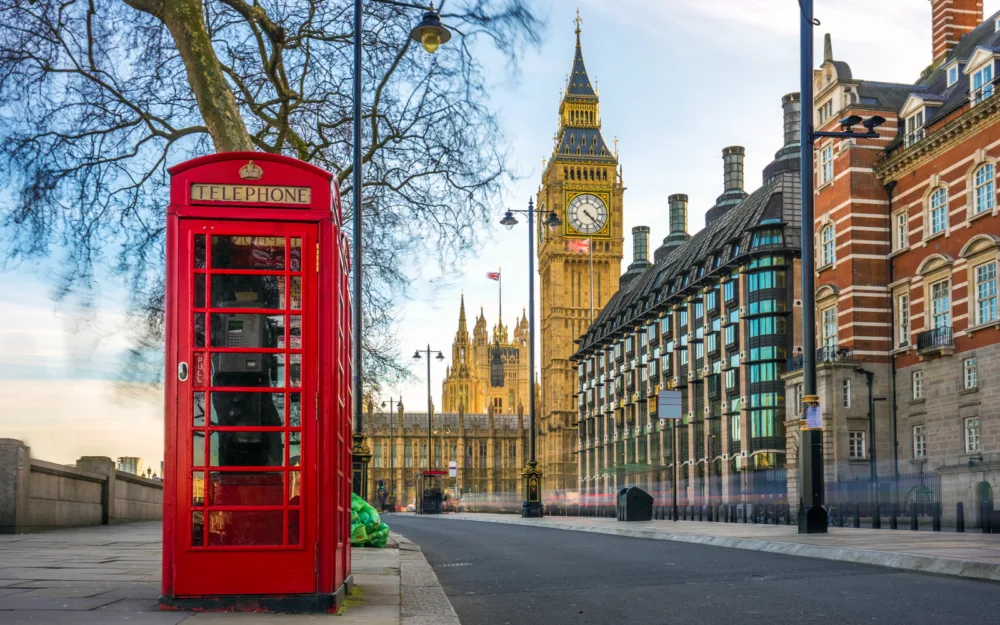
ZGPhotography/Shutterstock
The worst times to visit London area in January and February, with cold, wet, and dark days during these post-holiday months.
London locals often warn tourists to avoid January and February for a visit because it’s the city’s low point in terms of morale, weather, daylight, and events.
Most people come to London for sightseeing and urban exploration, but that’s tougher to enjoy when it’s raining sheets or drizzling 10-12 days of the month. Cold temperatures with lows that dip to 40°F and highs struggling to hit the upper 40s make it worse.
You might find January and February a bit boring for a London trip because so few events and festivals take place just after the busy holiday season. People are “skint” after Christmas and tend to hibernate in their homes to recuperate from the holiday stress.
It can be a good time to hit London’s attractions, museums, and galleries indoors with smaller crowds, but you won’t be getting the true London experience in January and February. Plus, it gets dark around 4-5pm!
Prices are another saving grace for the January-February period, with hotels dropping their rates as the stream of tourists dries up:
- January: $71-$362/night
- February: $67-$368/night
Take a look at the Cheapest Time to Visit section to get an idea of events and festivals that happen between January and February — with the exception of New Year’s and Chinese New Year parades, there’s not much going on this time of year.
London by Month: Climate & Activities
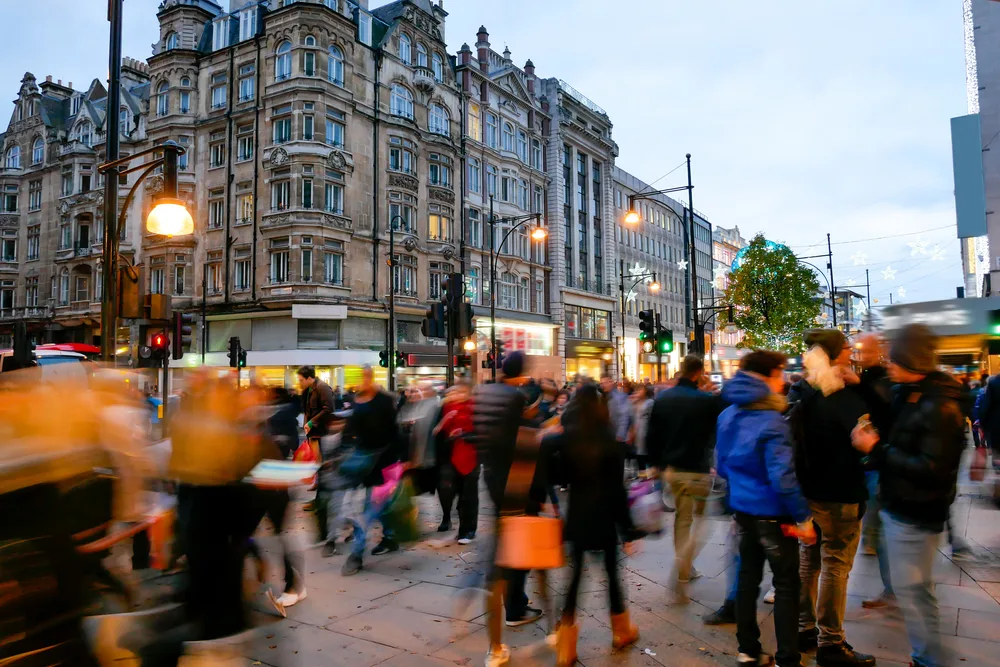
alice-photo/Shutterstock
Still unsure about the best time to visit London? Take a look at our summary of the weather and climate by month below:
January
London’s winter temperatures in January range from 2 to 8°C (36-46°F). January is an ideal time for exploring indoor attractions like the British Museum, attending theater shows in the West End, and experiencing the festive lights still adorning the city.
February
Similar to January, February maintains cool temperatures between 2 to 9°C (36-48°F). Visitors can enjoy winter sales in famous shopping districts like Oxford Street, explore art galleries such as the Tate Modern, and attend Chinese New Year celebrations in Chinatown.
March
As spring begins, temperatures range from 4 to 11°C (39-52°F). March is perfect for enjoying the blooming flowers in parks like Hyde Park and Kensington Gardens, exploring the historic Tower of London, and attending the St. Patrick’s Day Parade.
April
Spring temperatures in London range from 7 to 14°C (45-57°F). It’s an ideal time for visiting the iconic landmarks like Buckingham Palace and the Houses of Parliament, exploring the Royal Botanic Gardens at Kew, and attending the London Marathon.
May
May sees temperatures ranging from 10 to 17°C (50-63°F). It’s a great month for boat rides on the Thames River, enjoying outdoor markets like Borough Market, and attending the Chelsea Flower Show for stunning floral displays.
June
In June, summer arrives in London with temperatures between 13 to 20°C (55-68°F). June offers opportunities for open-air concerts in Hyde Park, exploring the vibrant neighborhoods of Notting Hill and Camden, and attending the Trooping the Colour ceremony for the Queen’s official birthday.
July
July maintains mild temperatures from 15 to 22°C (59-72°F). It’s a popular month for outdoor festivals like Wireless and British Summer Time, exploring the British Museum and the National Gallery, and enjoying the scenic views from the London Eye.
August
Temperatures in August range from 15 to 22°C (59-72°F). It’s an excellent time for picnics in Regent’s Park, exploring the iconic Tower Bridge, and attending the Notting Hill Carnival, one of Europe’s largest street festivals.
September
As fall begins, temperatures range from 13 to 19°C (55-66°F). September offers a pleasant transition, with opportunities for exploring the West End theaters, visiting the Victoria and Albert Museum, and enjoying the changing colors in the city’s parks.
October
October sees temperatures ranging from 9 to 15°C (48-59°F). It’s a great month for Halloween events like the London Dungeon, exploring the historic Greenwich area, and attending the BFI London Film Festival.
November
Fall temperatures range from 6 to 11°C (43-52°F). November is perfect for museum visits, exploring the Christmas markets that begin to open, and attending the Lord Mayor’s Show, a traditional parade in the City of London.
December
In December, winter returns to London with temperatures ranging from 3 to 8°C (37-46°F). December brings opportunities for festive activities like ice skating at Somerset House, exploring the Christmas lights on Oxford Street, and attending the New Year’s Eve fireworks along the Thames.
Frequently Asked Questions
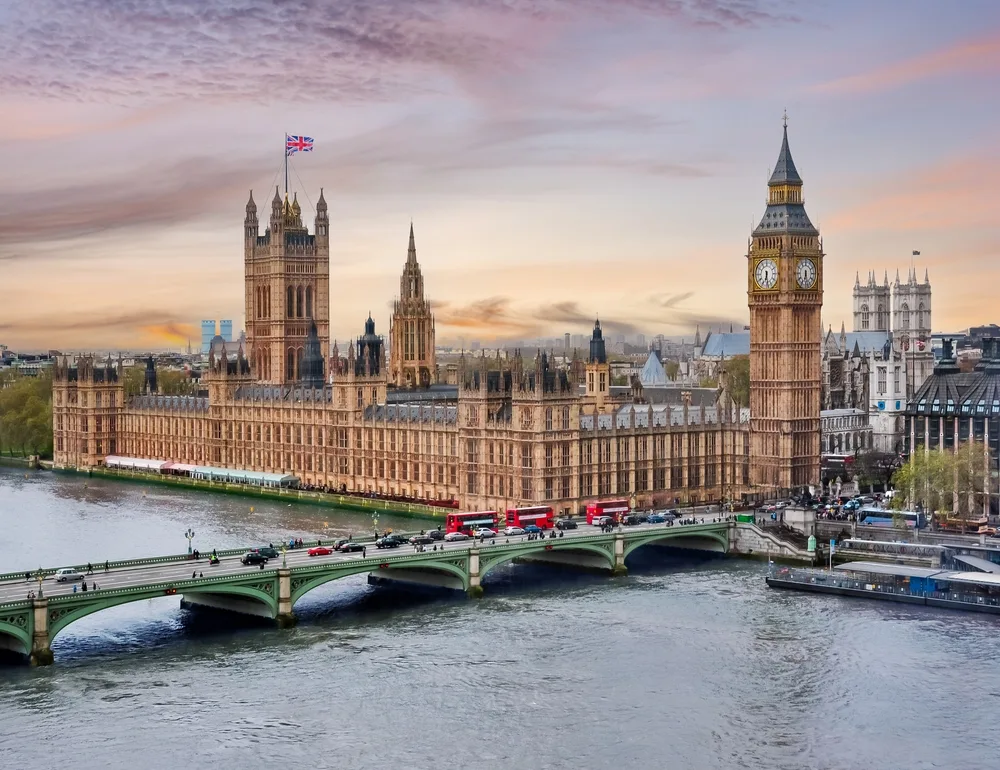
Mistervlad/Shutterstock
With the best time to visit London in mind, you might still have a few questions about planning the perfect visit to The Big Smoke. That’s what the FAQs below are for! Take a look and find your answers to the most common questions.
What is the best month to visit London?
While May to August is the best season, May is actually the best month to visit London overall with smaller crowds than the peak summer season, mild, dry weather in the 50s and 60s, flowers in bloom around the city, and people beginning to enjoy the green spaces and parks in full force.
There are several May events to look forward to, from flower shows to royal anniversary events, and sightseeing is at its best during this nice, less-crowded month.
Which month is cheapest in London?
June and September are the cheapest months for 2-star hotels in London, but January, February, and March are the cheapest months to visit overall. You’ll find better rates on hotels, flights, and some attractions during the winter and early spring.
You can expect to pay anywhere from $67 (2-star) to $377 (5-star) per night at London hotels between January and March, with 2-star hotel rooms in June and September going for as little as $49/night.
What are the rainiest months in London?
October, November, December, and January are the rainiest months in London. January is the wettest month of the year overall with roughly 12 rainy days during the month. October through December sees around 10 rainy days per month.
Rain isn’t a dealbreaker for a London visit because there are so many indoor attractions and places to visit. But it can make exploring the city on foot much more difficult and less enjoyable.
So, What’s the Best Time to Visit London?
Overall, May through August is the best time to visit London for a combination of great weather, festivals and events around the city, more sunshine hours, and affordable prices on 2- and 3-star hotels (especially in May and August).
If saving money is your top priority, look to visit between January and March. It’s not an ideal time to come in terms of weather (cold, wet, dark), but it’s cheaper than any other period and can work nicely for indoor attractions and tours.
Head to London between October and December if you want to sidestep the biggest tourist crowds. The cold weather, rain, and short days scares off most tourists and leaves the major attractions less crowded with plenty of seasonal events happening, too.
We usually discourage visiting London in January or February because these are the coldest, wettest, dreariest months of the year with short daylight hours and very few events happening around the city.
With these timeframes in mind, you’ll be able to plan the ideal London trip that suits your travel style and checks all your boxes for a memorable, fun-filled visit.



